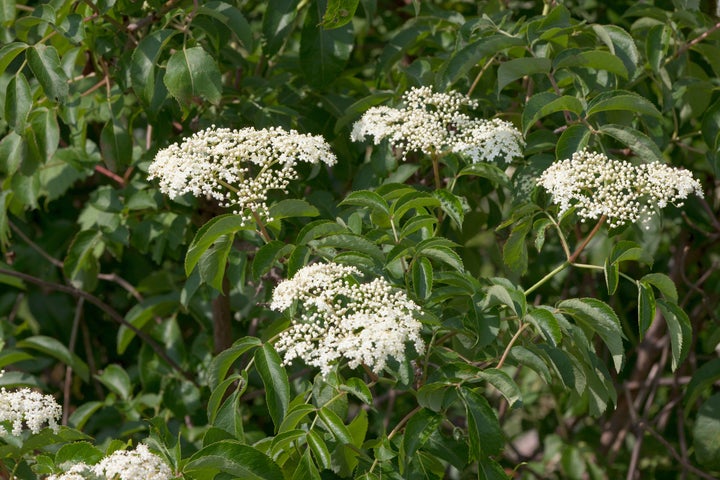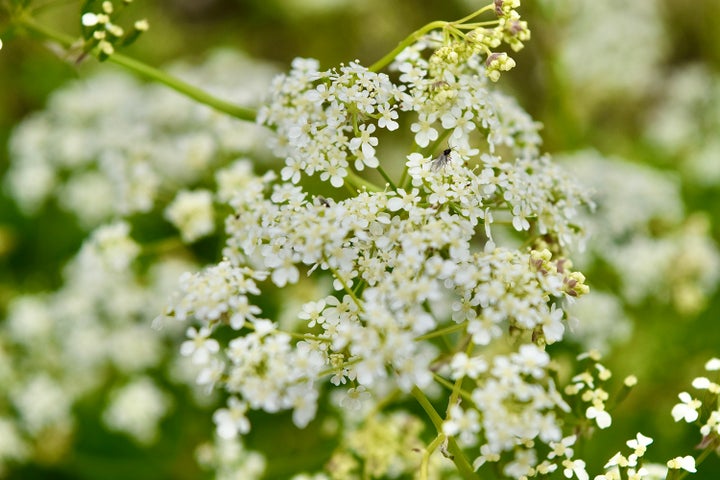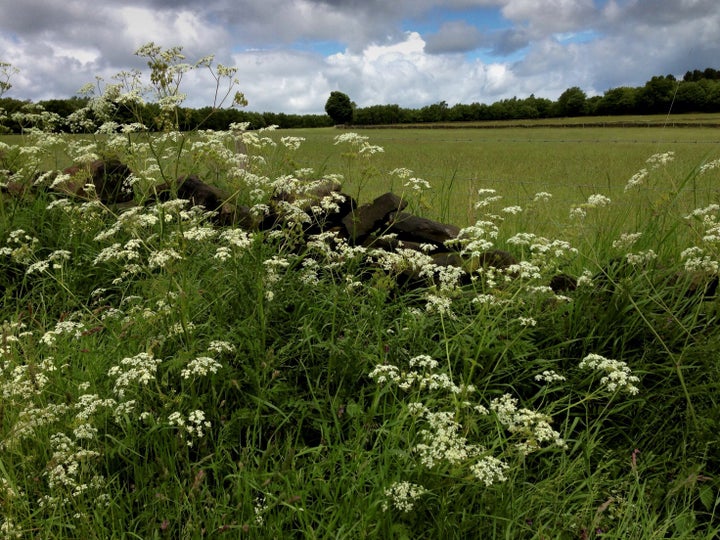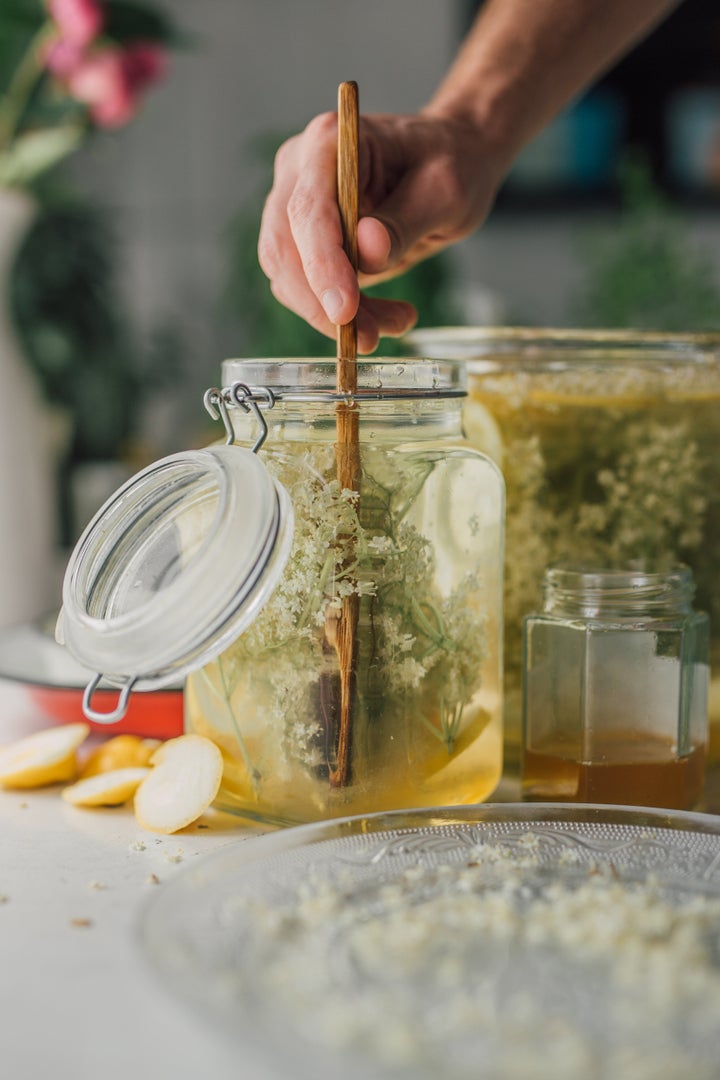
You might not think of yourself as a forager, but why not keep an open mind. Interest in foraging is up 89% year on year, according to the Waitrose Food & Drinks report.
And if you’ve never done it before, elderflower is a good place to start. Lacy white elderflower heads will soon be dotting Britain’s hedgerows and parks – not only are they a delicious ingredient, they’re also pretty easy to find, too.
“Elderflowers, belonging to the elder tree, spring through late May, June and into July / early August,” say Lucy Carr-Ellison and Jemima Jones, chefs at Wild by Tart in Belgravia.
But how do you pick – and use – elderflower – at its best? Read on for tips from a range of chefs who love to use in their menus.
What does elderflower look like?
Carr-Ellison and Jones describe the elder tree’s flowers as small and creamy-coloured, almost “lace-like”, in their words. “They create dense umbrellas of blossoms (fsimilar to cow parsley) and have five petals,” say the duo. “You know it’s elderflower from it’s sweet and floral strong scent.”
It’s the pollen that gives elderflower the distinct smell and colour, says James Knappett, chef and co-founder of Fitzrovia’s Kitchen Table. “Their pale green stalks break into delicate ‘florets’ with flowers growing at the end. Elderflowers should not, smell musty or damp. If they do, find fresher smelling blooms.”



Knappett suggests looking up and saving pictures online before a foraging trip and referencing them when you think you’ve found an elder tree.
“Quite often you can smell the scent as you get closer towards the plants,” he says. “Elderflower can be confused with Pyracantha – from a distance they may look like elderflower but close up there are some key differences.” Its flowers are larger and more tightly packed than elderflower, with brown anthers.
Where can you find elderflower?
Look in hedgerows, fields with trees and small tree outcrops, says Knappett.
Elderflowers grow on trees up to fives metres high, he says, not on the ground. You won’t see a trunk because the flowers grow from bushy foliage, but look out for the serrated edges of the elder tree leaves. “There are some foraging apps available that show you where there could be potential trees around,” he adds.

How do you forage elderflower?
Carr-Ellison and Jones explain: “Take a pair of secateurs – we like usingneedle nose fruit pruners, which are small and sharp and fit nicely in your pocket – and snip just below the main stem belonging to the head of flowers. Take a basket or a bag with you to carry your find.”
Avoid busy roads, they add, as your flowers could be polluted with fumes, “and make sure you don’t strip a tree bare, leave plenty to develop into berries and to be enjoyed by local wildlife.”
Vegan cookbook author and chef Bettina Campolucci Bordi, from Bettina’s Kitchen, uses a three-point approach.
“First, smell them,” she says. “If they smell of cat pee, just walk away. Yes, it is essential to walk away! They are past their picking prime. Second, note the colour. The flowers are at their best when they are full of scented, pale yellow dust which is the pollen. This is the only time to pick them.
“And thirdly, look at the pods. If the flowers are only unopened then you’re in luck! If they have not flowered yet, and all you need to do is wait a little while, a few days, until they do.”

What can you do with elderflower?
It’s best not to eat elderflowers raw, as the plant has a mild toxicity, but cook or prep them and you’re in for a treat.
The first elderflower go-to is cordial, say Carr-Ellison and Jones, which can be added to a glass of sparkling water and mint, champagne, or a gin and tonic.
For savoury dishes, the pair infuse vinegar with elderflower for dressings, as well as using it for a ganish. “You can also make crunchy little elderflower fritters which are great fun,” they add. “And it works wonderfully in desserts like ice cream, tarts, cakes and other pastries.”
At Kitchen Table, elderflower cordial is also a mainstay, says Knappett, as well as fresh elderflower tea, infused in vinegar, oil or honey, ice cream, sorbets and granita. He also likes frying the florettes in tempura.
Will Bowlby, chef patron of Kricket, picks elderflower every year with his mum. “Elderflower vinegar is a staple of mine,” he says. “To make it, fill a sterilised jam jar with five elderflower heads and top up with warmed white wine or distilled white vinegar. Leave to steep for two weeks before straining and using in dressings. It’s great with fish and at the restaurant we use it for scallops and the likes of whole plaice.
A Simple Elderflower Cordial Recipe
Chef Tommy banks, author of Roots cookbook, shares the following recipe.
Makes 3 litres
Ingredients:
40 ripe elderflower heads
2 litres boiling water
1kg caster sugar
2 tsp citric acid

Method:
1. Check the elderflowers for any insects, place them in a bowl and pour over the boiling water. Cover loosely and leave to steep overnight.
2. Strain the elderflowers through a muslin cloth into a large saucepan. Add the sugar and citric acid, bring to the boil, reduce the heat and simmer for a couple of minutes
3. Leave to cool and store in a sterilised bottle of jar in the fridge for a month. Alternatively, freeze for the winter months – it will keep all year.